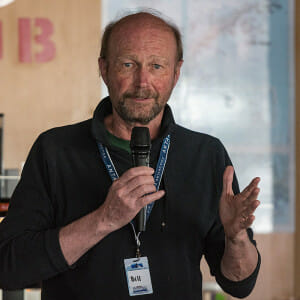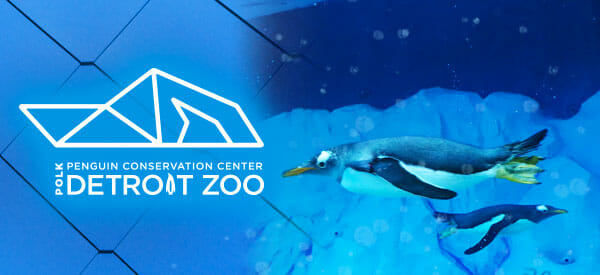
Planning for the Polk Penguin Conservation Center included visits by key project leadership to Antarctica to observe and experience how penguins live in the extreme environments to which they are uniquely adapted, as well as extensive consultation with experts in penguin conservation and climate science. The penguin center’s design was developed by a team including Detroit Zoological Society executives and biologists, world-renowned architects, and leaders in visitor experience and educational programs in informal settings such as zoos and museums.
 Preeminent polar ecologist and penguin expert Dr. Bill Fraser, director of Polar Oceans Research Group, is a key member of the design team. Since 1974, he has worked in Antarctica monitoring the activities of Adélie penguins and documenting environmental change. A book called “Fraser’s Penguins” by Fen Montaigne documents his work and underscores the unsettling changes that have occurred in the Antarctic Peninsula in recent decades. Dr. Fraser’s knowledge and insights on Antarctica and penguins have been invaluable in the design of the new penguin center.
Preeminent polar ecologist and penguin expert Dr. Bill Fraser, director of Polar Oceans Research Group, is a key member of the design team. Since 1974, he has worked in Antarctica monitoring the activities of Adélie penguins and documenting environmental change. A book called “Fraser’s Penguins” by Fen Montaigne documents his work and underscores the unsettling changes that have occurred in the Antarctic Peninsula in recent decades. Dr. Fraser’s knowledge and insights on Antarctica and penguins have been invaluable in the design of the new penguin center.
The Polk Penguin Conservation Center was designed by Jones & Jones, architects of Disney’s Animal Kingdom as well as the Detroit Zoo’s Arctic Ring of Life and National Amphibian Conservation Center, and by Albert Kahn Associates, architects of the Zoo’s Ruth Roby Glancy Animal Health Complex.
The following individuals and companies were instrumental in the planning and execution of the Polk Penguin Conservation Center.*
Architects
- Alan Cobb, Albert Kahn Associates
- John Hrovat, Albert Kahn Associates
- Mario Campos, Jones & Jones
- Johnpaul Jones, Jones & Jones
General Contractor
Consultants
- Dr. Bill Fraser, Director, Polar Oceans Research Group
- Brian Mooney, President, Integrity Building Group
- SimEx! Iwerks Entertainment
- Through the Learning Glass (TLG), LLC
Detroit Zoological Society (DZS) Design Committee
- Dr. Stephanie Allard, Director of Animal Welfare
- John Anderson, former Director of Park Operations
- Scott Carter, Chief Life Sciences Officer
- Dr. Ann Duncan, Director of Animal Health
- Ron Kagan, Executive Director and CEO
- Diane Miller, Chief Program Officer
- Edgar Parks, DZS Advisory Board Member (deceased)
- Stephen Polk, Vice Chair of the DZS Board
- Tom Schneider, Curator of Birds
- Gerry VanAcker, Chief Operating Officer
- Bonnie Van Dam, Associate Curator of Birds
*Names and professional titles are as of 2016.






 Preeminent polar ecologist and penguin expert Dr. Bill Fraser, director of Polar Oceans Research Group, is a key member of the design team. Since 1974, he has worked in Antarctica monitoring the activities of Adélie penguins and documenting environmental change. A book called “Fraser’s Penguins” by Fen Montaigne documents his work and underscores the unsettling changes that have occurred in the Antarctic Peninsula in recent decades. Dr. Fraser’s knowledge and insights on Antarctica and penguins have been invaluable in the design of the new penguin center.
Preeminent polar ecologist and penguin expert Dr. Bill Fraser, director of Polar Oceans Research Group, is a key member of the design team. Since 1974, he has worked in Antarctica monitoring the activities of Adélie penguins and documenting environmental change. A book called “Fraser’s Penguins” by Fen Montaigne documents his work and underscores the unsettling changes that have occurred in the Antarctic Peninsula in recent decades. Dr. Fraser’s knowledge and insights on Antarctica and penguins have been invaluable in the design of the new penguin center.